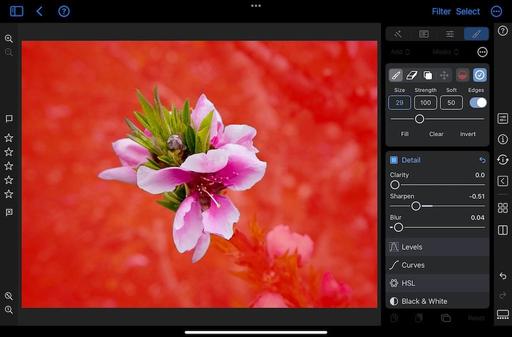This is The Digital Story Podcast #993, April 1, 2025. Today's theme is, "New Photo Workshop Plus an Update on the M4 MB Air." I'm Derrick Story.
Opening Monologue
We have a new online workshop coming in May, updates for upcoming events, iOS 18.4 hits the streets, and more thoughts about the Fujifilm GFX 100RF. Plus my hands-on impressions of the new M4 MacBook Air - Yes, it's plenty powerful for photographers. All of this, and more, on today's TDS Photography Podcast. I hope you enjoy the show.
Tune-In Via Your Favorite Podcast App!
Apple Podcasts -- Spotify Podcasts -- Stitcher
Podbean Podcasts -- Podbay FM -- Tune In
New Photo Workshop Plus an Update on the M4 MB Air
New Workshop!: Sony Creative Master Class led by Rob Knight, starting on May 8th, 2025.
This all-new class is designed to help you make the most of your Sony camera. We will dive in to the features, custom functions, menus, and MORE. Each online class will include presentations and tutorials based on years of professional photography experience using various Sony cameras and lenses, PLUS plenty of time for your questions about the system.
Workshop Updates!
Creative Camera Techniques led by Derrick Story, starting on June 5, 2025.
In addition to the full slate of goodies I have planned for iPhone photographers, Fuji cameras, Nikons, and more, I'm adding creative techniques for the new OM System OM-3. Photographers will be able to pick and choose techniques based on the camera system they shoot with.
Sonoma County Autumn Adventure Workshop, led by Derrick Story, starting on Nov. 4, 2025.
We will be returning to Safari West African Wildlife preserve, and visiting the world famous Coppola Vineyard, home of amazing wines, rolling vineyards, Academy Awards, an authentic Tucker car, and more.
You can reserve your place of each of these events by visiting our Workshops Page.
Camera Industry News
It's Crazy How Sharp the Fujifilm GFX100RF Lens Is on Petapixel.com.
You can buy a cage for the Fujifilm GFX100RF before you can get the camera on DPReview.com.
iOS 18.4 now available: Here's what's new on 9to5mac.com.
Quick Tip
You can hide ugly screenshots from your All Photos Library camera roll in Photos for macOS by going to View and unchecking Screenshots from the popup menu.
MacBook Air M4 Hands On
In this segment, Derrick discusses life with the new MacBook Air M4, 24 GB RAM, 1TB SSD laptop ($1,599).
Virtual Camera Club News
Schedule a My TDS Moment Recording Session
If you want to participate in our 1,000th Podcast Celebration, here's how it's going to work. I've set up a Meeting Calendar for Friday appointments. If there's an open slot, you can sign up for it. On that date, we will connect via Zoom and I will record your TDS Moment. I hope you can join us in the festivities!
TDS Photography Workshops! Reserve your spot now. We have an exciting slate of online and in-person events. If you have any questions, use the Nimble Photographer Contact Form. I will get back to you ASAP.
The Nimble Photographer Newsletter is now publishing every Thursday. Readers will enjoy a variety of content spanning from short photo essays, to commentary on weekly events, to reviews of the latest and coolest photo gear.
Inner Circle Members: A big thanks to those who support our podcast and our efforts! We are having a blast at our new Inner Circle hangout, the private group I've set up at DerrickStoryOnline. We'd love it if you join us. You can become an Inner Circle Member by signing up at our Patreon site. You will automatically be added to the new hangout.
Great Photography Articles on Live View - If you check out our publication and appreciate what you see, be sure to follow us and clap for those authors. You can find us at medium.com/live-view.
If you're interested in writing for Live View, drop me a line at dstory@gmail.com.
The New Donation Kit for Carefree Shipping of Found Film Cameras - If you've discovered a film camera that's no longer being used, our new Donation Kit makes it easy to pack and ship. Just visit the Contact Form on thenimblephotographer.com, click the box next to Donating a Film Camera, and let me know what you have. In your note, be sure to include your shipping address.
Affiliate Links - The links to some products in this podcast contain an affiliate code that credits The Digital Story for any purchases made from B&H Photo and Amazon via that click-through. Depending on the purchase, we may receive some financial compensation.
Red River Paper - And finally, be sure to visit our friends at Red River Paper for all of your inkjet supply needs.
See you next week!
You can share your thoughts at the TDS Facebook page, where I'll post this story for discussion.






















